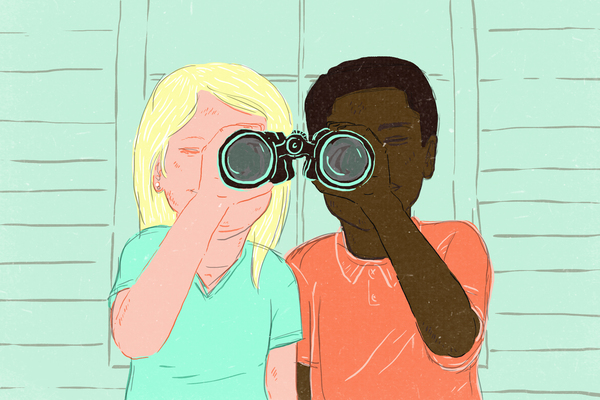The civil rights problem in U.S. schools: 10 new numbers
Go Deeper.
Create an account or log in to save stories.
Like this?
Thanks for liking this story! We have added it to a list of your favorite stories.

It's a rare and remarkable view into America's public schools and the challenges that continue some 60 years after Brown v. Board of Education:
The Civil Rights Data Collection survey.
Since 1968, the federal government has been sending it to the nation's schools to gauge educational access and enforce civil rights law.
Today, the U.S. Education Department released its 2013-2014 CRDC results, covering more than 95,000 schools and 50 million students.
There's a lot to wade through, but these are some of the numbers that jumped out at us (links are to previous NPR coverage).
49.7 percent of public school students are students of color: 24.7 percent Hispanic or Latino of any race, 15.5 percent black or African-American, 4.8 percent Asian, 3.1 percent two or more races.
6.5 million students missed 15 days of school or more. That's 13 percent of all students and 18 percent of all high school students. This chronic absenteeism indicator is new to this year's report.
Black preschoolers are 3.6 times more likely to be suspended than white preschoolers.
51 percent of high schools with high black and Latino enrollment also have assigned police officers.
1.6 million students attend a high school with a police officer but no guidance counselor.
Black students are 2.3 times more likely than white students to be referred to law enforcement or arrested as a result of a school incident.
Fewer than 3 percent of English language learners are in gifted programs, though they make up 11 percent of students at the schools that offer those programs. Similar disparities exist for black and Hispanic students.
For the first time, the Education Department asked about educational services for young people in justice facilities, including jails and prisons. 21 percent of these facilities offer less than a full school year of instruction.
Black and Latino students make up 38 percent of those enrolled at schools that offer AP courses — but less than a third of students taking AP courses. Similar disparities were found in advanced math and science courses like chemistry, physics, algebra II and calculus.
In schools with high black and Latino enrollment, 10 percent of teachers were in their first year, compared with 5 percent in largely white schools.
Copyright 2019 NPR. To see more, visit https://www.npr.org.
Turn Up Your Support
MPR News helps you turn down the noise and build shared understanding. Turn up your support for this public resource and keep trusted journalism accessible to all.


